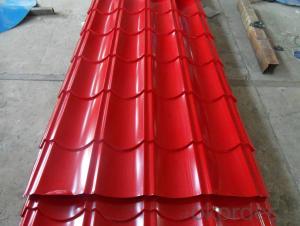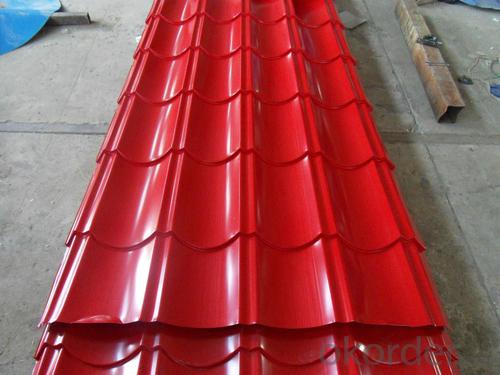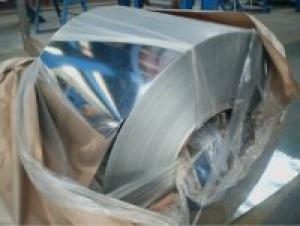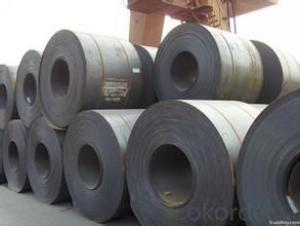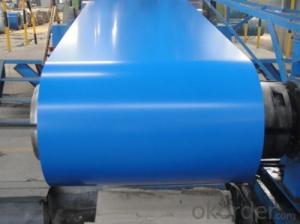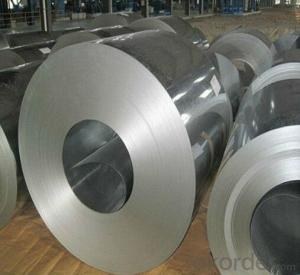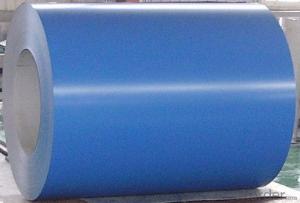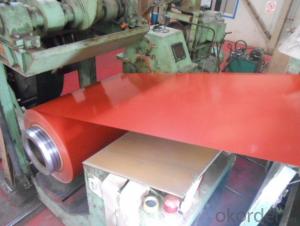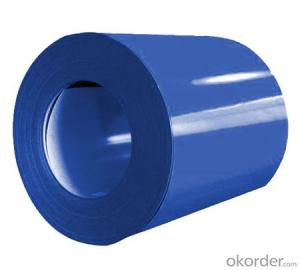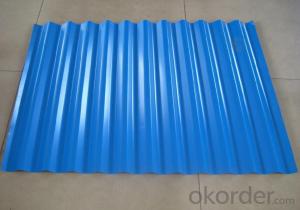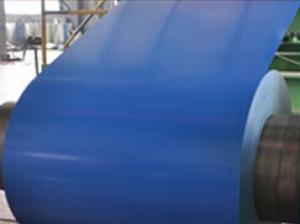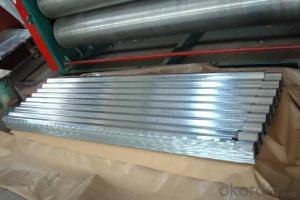Pre-Painted Galvanized/Aluzinc Steel Coil --Smooth and Flat Surface
- Loading Port:
- China main port
- Payment Terms:
- TT OR LC
- Min Order Qty:
- 50 m.t.
- Supply Capability:
- 10000 m.t./month
OKorder Service Pledge
OKorder Financial Service
You Might Also Like
1. Pre-Painted Galvanized/Aluzinc Steel Coil --Smooth and Flat Surface
With GI as base material, after pretreatment (degrease and chemical treatment ) and liquid dope with several layers of color, then after firing and cooling, finally the plate steel is called pre-painted galvanized (aluzinc) steel. Pre-painted galvanized steel is good capable of decoration, molding, corrosion resistance. It generally displays superior workability, durability and weather resistance.
2.Main Features of Pre-Painted Galvanized/Aluzinc Steel Coil --Smooth and Flat Surface:
• Excellent process capability
• Smooth and flat surface
• High strength
3. Images:
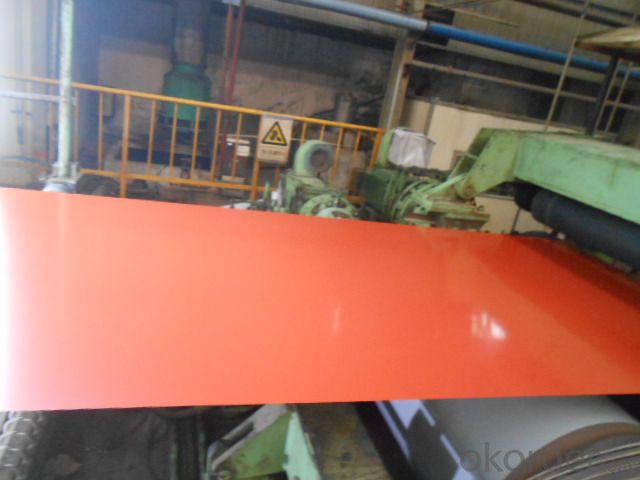
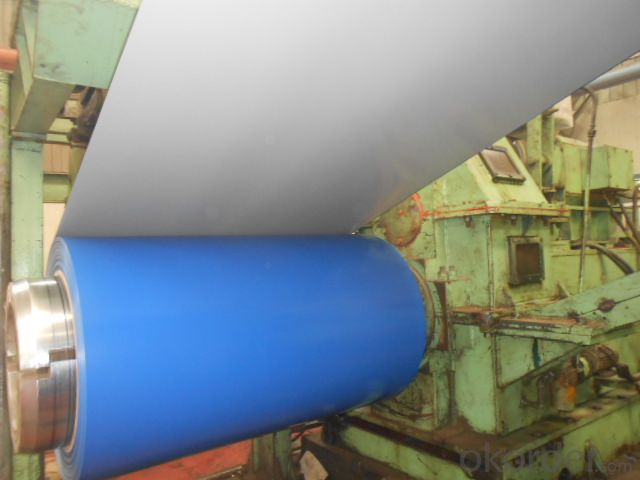
4.Pre-Painted Galvanized/Aluzinc Steel Coil Specification
Standard: AISI, ASTM, BS, DIN, GB, JIS
Grade: DX51D, DX52D
Thickness: 0.17-2.0mm
Brand Name: KMRLON
Model Number: coil
Special Use: High-strength Steel Plate
Width: 20-1250mm
Thickness: 0.13-4.0mm
width: 20-1250mm
zinc coating: 40-180g/m2
printing thickness: top side: 20+/-5 microns, back side: 5-7 microns
color: all RAL color
coil weight: 4-7 tons
5.FAQ of Pre-Painted Galvanized/Aluzinc Steel Coil
1. What’s the application of this product?
Roof, roof structure, surface sheet of balcony, frame of window.
2. How long can we receive the product after purchase?
Usually within thirty working days after receiving buyer’s advance payment or LC. We will arrange the factory manufacturing as soon as possible. The cargo readiness usually takes 15-25 days, but the shipment will depend on the vessel situation.
- Q: What are the common methods of cutting-to-length steel coils?
- Depending on the industry's specific requirements and capabilities, there are various common methods used to cut-to-length steel coils. 1. Shearing: For thinner gauge materials, one can utilize shearing, which involves using a shear blade to cut the steel coil into specific lengths. This cost-effective method is ideal for high-volume production. 2. Slitting: For narrower strips or multiple widths from a single coil, slitting is a suitable process. It entails passing the steel coil through rotating circular blades that cut the coil into desired widths. Slitting is commonly used for thinner gauge materials. 3. Laser cutting: To achieve precise and clean cuts, laser cutting employs a high-powered laser beam that melts and vaporizes the steel coil. This method is versatile, suitable for a wide range of materials, complex shapes, and contours. Laser cutting is often chosen for high-precision applications and smaller production runs. 4. Sawing: Thicker gauge materials are commonly cut using sawing. This method, which can be done manually or with automated sawing machines, involves using a saw blade to cut through the steel coil. Sawing is ideal for cutting large sections or heavy-duty applications. 5. Rotary cutting: Rotary cutting is frequently employed for thicker gauge materials in high-speed production. This method utilizes a rotary shear to cut the steel coil into desired lengths, providing a clean and accurate cut. Many industries prefer rotary cutting. It is important to consider that each method has its own advantages and limitations. The appropriate cutting method selection depends on factors such as material thickness, coil width, required precision, production volume, and budget constraints.
- Q: Hi, I live in the Boston area and I'm trying to find a steel suppler that can provide mild steel for hobby welding. I can go through my job, but we only put in orders every couple of months so it's not very convenient. Also, the few suppliers I've found only sell in bulk. So if anyone knows where I can angle irons, flat bars, sheets, etc... by the piece it would greatly appreciated. Thanks
- They will sell any quantity of metal and even cut it to size - my experience has been that their prices are not wildly out of line for single pieces of full length stock compared to buying singles where you have to buy a minimum. They also may have sizes that ordinary places consider odd. I was looking for 5/8 square 16 gauge and was told it would have to be shipped in from Houston (to Dallas) by my nearest supplier and found it in stock at MetalSM. But check if you get something odd - the 5/8 cost more than 3/4 at both places and MetalSM actually gave me 3/4 but took it back even though I had cut it. Also check the regular steel suppliers in your area as well as retail welders metal supply places.
- Q: so i've started learning to play guitar in the past few weeks, and i'm using my sister's old guitar which isn't in very good condition, so i'm planning on buying a new one, but which would be better to buy, nylon string or steel string?
- It rather relies upon on what type of music you're enjoying, nylon string guitars have a mellow, softer tone than steel strings, the feel of the nylon strings (a minimum of to me) are reliable, in my opinion, i might ought to declare nylon is extra suitable, large for finger choosing and a effective tone. once you're searching for a guitar, you are able to flow out to a close-by guitar save, and attempt the two out for your self, in straight forward terms then will you comprehend for specific.
- Q: i wanna buy a sharp carbon steel sword the swords i want are a 200 layer carbon steel katana or a hand forged high carbon steel katanna or a hand sharpened sword which one would be sharper/stronger
- actual katanas choose universal upkeep, they rust actual and uninteresting rapidly. in case you get a replica possibility is that's going to ruin the 1st time you hit something with it. in case you will discover one, the WW2 officers swords have been of stable high quality and the in demand metals recommend it would not rust or uninteresting as actual. in case you do insist on getting a carbon scouse borrow blade be waiting to grease it frequently. that's going to rust on the point out of moisture.
- Q: How are steel coils used in the production of agricultural trailers?
- Steel coils are used in the production of agricultural trailers as they are formed into various structural components such as frames, chassis, and supports. These coils are cut, shaped, and welded to create a sturdy and durable trailer structure that can withstand heavy loads and rough terrains commonly encountered in agricultural operations.
- Q: What are the environmental considerations associated with steel coil production?
- The environmental considerations associated with steel coil production include the extraction of raw materials, such as iron ore and coal, which can lead to habitat destruction and air/water pollution. The manufacturing process involves energy-intensive operations and emissions of greenhouse gases, contributing to climate change. Waste generated during production, such as slag and dust, can also have negative impacts on the environment if not properly managed. Additionally, the transportation of steel coils over long distances can result in carbon emissions and increase the overall environmental footprint of the product.
- Q: How are steel coils used in the production of packaging materials?
- Steel coils are used in the production of packaging materials as they are processed and shaped into various forms, such as sheets or strips, which can be used to create durable and sturdy packaging products. These coils are often used to make packaging materials like cans, drums, and containers, providing strength, structural stability, and protection to the packaged goods during storage and transportation.
- Q: What are the safety precautions to be followed while handling steel coils?
- When handling steel coils, it is important to follow certain safety precautions to prevent accidents and injuries. Here are some safety precautions to be followed: 1. Personal Protective Equipment (PPE): Always wear appropriate PPE, such as safety glasses, gloves, steel-toed boots, and hard hats. These items will protect you from potential hazards like falling objects, sharp edges, and chemicals. 2. Proper Lifting Techniques: Use proper lifting techniques to prevent strains and back injuries. Lift with your legs, not your back, and avoid twisting or jerking motions while handling the coils. If the coils are too heavy or awkward to lift manually, use mechanical lifting equipment like forklifts or cranes. 3. Secure Storage: Store steel coils in a secure and stable manner to prevent them from falling or rolling over. Use proper racks, shelves, or storage containers designed specifically for steel coils. Ensure that the storage area is clean, organized, and free from obstructions. 4. Handling Tools: Use appropriate handling tools like coil hooks, lifting clamps, or coil tongs to securely grip the steel coils. Avoid using makeshift or improper tools, as they can cause the coils to slip, resulting in accidents. 5. Secure Transportation: When transporting steel coils, ensure they are properly secured on the truck or flatbed. Use appropriate tie-downs, straps, or chains to prevent the coils from shifting or falling during transit. Follow all transportation regulations and guidelines to ensure safe transportation. 6. Awareness of Surroundings: Be aware of your surroundings and the presence of other workers or equipment in the area. Maintain a safe distance from moving machinery, forklifts, or other vehicles to avoid collisions or accidents. 7. Hazard Communication: Ensure that all employees handling steel coils are trained on proper safety procedures and understand the potential hazards involved. Display safety signs or labels to indicate the presence of heavy loads or hazardous materials. 8. Regular Maintenance: Regularly inspect and maintain equipment, such as lifting devices or storage racks, to ensure they are in good working condition. Report any defects or malfunctions to the appropriate personnel for prompt repairs. By following these safety precautions, you can minimize the risk of accidents, injuries, and damage when handling steel coils. It is important to prioritize safety in order to protect yourself and your coworkers in the workplace.
- Q: The steel is orangish in colour and is mostly made of copper
- Steel is an alloy of iron and carbon and optionally one or more of numerous other materials. Copper is normally not used, except sometimes in small percentages. Steel is never yellow or orange in color. Reactivity of steel depends on the materials it is alloyed with. Chromium and nickel with steel make stainless steel, which is much less prone to reactive than iron. .
- Q: How are steel coils processed for edge trimming or shearing?
- Steel coils are typically processed for edge trimming or shearing by using specialized machinery such as slitters or shears. These machines are designed to cut the excess edges of the coil, ensuring uniform and precise dimensions. The coils are fed through the machine, where the excess material is removed, leaving clean and straight edges. This process helps to enhance the quality and appearance of the steel coils, making them ready for further manufacturing or fabrication.
Send your message to us
Pre-Painted Galvanized/Aluzinc Steel Coil --Smooth and Flat Surface
- Loading Port:
- China main port
- Payment Terms:
- TT OR LC
- Min Order Qty:
- 50 m.t.
- Supply Capability:
- 10000 m.t./month
OKorder Service Pledge
OKorder Financial Service
Similar products
Hot products
Hot Searches
Related keywords
